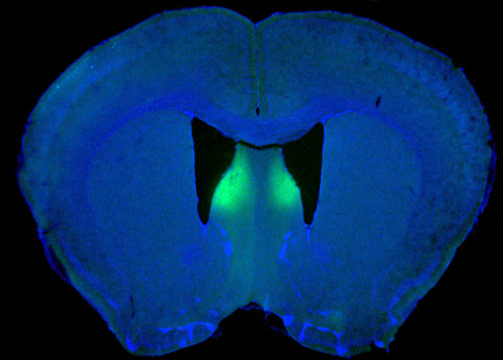Where does rage come from? Origin of violent behaviour discovered in male mice brains

The part of the brain where rage comes from has been identified in male mice. Scientists discovered the lateral septum – the mid-brain wall structure – is involved in "turning the volume up or down" in male aggression, and that this could have implications for human violence.
Male mice have long been known to carry out violent and unprovoked attacks, mostly on other mice, and that this behaviour was often found in those with a damaged lateral septum – a condition called 'septal rage'. Researchers from New York University have low examined this area of the brain to work out how it is linked to rage.
Published in the Cell Press journal Current Biology, researchers wrote: "Aggression is a prevalent behaviour in the animal kingdom that is used to settle competition for limited resources. Given the high risk associated with fighting, the central nervous system has evolved an active mechanism to modulate its expression."
In order to better understand how the lateral septum influences aggression, they 'excited' these brain cells with light. When they changed the activity in the lateral septum, they found they could start, stop and restart aggressive behaviour.
They found stimulating the lateral septum cells controlled other brain cells located in regions known to be highly active during natural aggression – the hypothalamus. Until now, it was not known how other parts of the brain interacted with the hypothalamus.
The lateral septum is connected to and receives signals from the hippocampus – which is involved in emotion and learning. Because it is also connected to the region of the brain tied to aggression and hormone production (the hypothalamus), it appears the lateral septum plays a key role in violence.
Senior investigator Dayu Lin said: "Our latest findings show how the lateral septum in mice plays a gatekeeping role, simultaneously 'pushing down the brake' and 'lifting the foot off the accelerator' of violent behaviour.
"Our research provides what we believe is the first evidence that the lateral septum directly 'turns the volume up or down' in aggression in male mice, and it establishes the first ties between this region and the other key brain regions involved in violent behaviour."
Septal rage – as it is known in mice – does not occur in humans. However, the team says studying aggression in male mice might help us map the circuits involved in controlling other types of aggression, including those seen in humans.
They now plan to look at the specific brain cells in the lateral septum that control aggression and what conditions are needed to start or stop violence. In the long term, they hope to find a means of controlling aggression without affecting social and cognitive abilities.
© Copyright IBTimes 2025. All rights reserved.






















